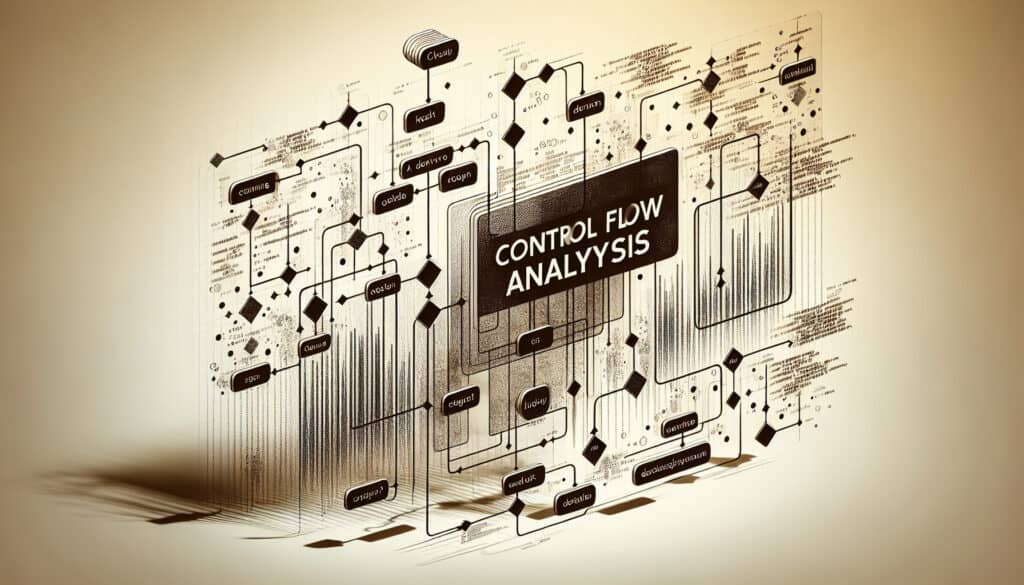A static analysis technique used to determine the control flow of a program without executing it.
- Metodologie: Clienti e marketing, Economia
Control Flow Analysis

Control Flow Analysis
- Miglioramento dei processi, Garanzia di qualità, Gestione del rischio, Software, Ingegneria del software, Test del software, Analisi statistica
Obiettivo:
Come si usa:
- It's a method, often used by compilers, to build a graph representation (a control-flow graph) of all the paths that might be traversed through a program during its execution.
Professionisti
- Is essential for code optimization in compilers, can detect unreachable code or infinite loops, and is a foundation for many other types of software analysis.
Contro
- Can be complex for programs with indirect jumps or other complex control structures, and it only analyzes possible paths, not which paths will actually be taken.
Categorie:
- Ingegneria, Qualità
Ideale per:
- Statically analyzing the possible execution paths of a program to optimize or check it for errors.
Control Flow Analysis (CFA) finds utility across various sectors like software development, automotive systems, and embedded systems design, where safety and reliability are paramount. This methodology is particularly relevant in the debugging phase of software development, where developers aim to identify potential flaws that could lead to crashes or unintended behavior. Participants in this process typically include software engineers, quality assurance teams, and system architects who work collaboratively to ensure robust application functionality. In automotive industries, for instance, CFA contributes to the verification of safety-critical systems such as autopilot or anti-lock braking systems by evaluating the control flow to ensure there are no paths that could lead to failure during operation. In game development, CFA assists in optimizing rendering and processing tasks by ensuring the code paths that process graphics and physics operations are efficient, thus improving overall performance. Additionally, CFA can be applied in static code analysis tools that help developers analyze large codebases for potential issues like unexecuted code segments or inadvertent infinite loops, which can significantly increase software reliability and maintainability. Tools employing this methodology also facilitate automated testing processes, allowing teams to create targeted test cases based on the identified execution paths, ensuring comprehensive coverage and intervening early in the development cycle to prevent costs associated with debugging late-stage code. This structured approach, often foundational for advanced software analyses like data flow analysis or static program verification, enhances the overall quality and resilience of software products deployed in various critical applications.
Fasi chiave di questa metodologia
- Parse the source code to build an abstract syntax tree (AST).
- Transform the AST into an intermediate representation (IR) suitable for analysis.
- Identify the basic blocks in the IR, which contain sequences of instructions without control transfers.
- Determine the control flow between basic blocks by analyzing potential transitions based on control structures.
- Construct the control-flow graph (CFG) by linking basic blocks with edges representing the flow of control.
- Analyze the CFG to identify unreachable blocks, loops, and other structural properties.
- Optimize the program code based on insights from the CFG analysis.
Suggerimenti per i professionisti
- Incorporate advanced dataflow analysis techniques to enhance the precision of your control flow analysis, allowing for more informed optimizations and detection of subtle errors.
- Leverage heuristics in control flow graph simplification to improve the performance efficiency of your static analysis tools without compromising the analysis quality.
- Integrate symbolic execution with control flow analysis to deepen error detection capabilities, especially for programs with dynamic inputs and complex conditional structures.
Leggere e confrontare diverse metodologie, raccomandiamo il
> Ampio archivio di metodologie <
insieme ad altre 400 metodologie.
I vostri commenti su questa metodologia o ulteriori informazioni sono benvenuti su sezione commenti qui sotto ↓ , così come tutte le idee o i link relativi all'ingegneria.
Contesto storico
1828
1850
1854
1854
1911
1928
1950
1827
1848
1850
1854
1895
1914
1943
1970
(se la data non è nota o non è rilevante, ad esempio "meccanica dei fluidi", viene fornita una stima approssimativa della sua notevole comparsa)















Post correlati
Calcolatore da METS a calorie
Meta-analisi
Mappatura dei messaggi
Diagrammi del modello mentale
Forze di spinta e di trazione massime accettabili
Pianificazione dei fabbisogni di materiale (MRP)